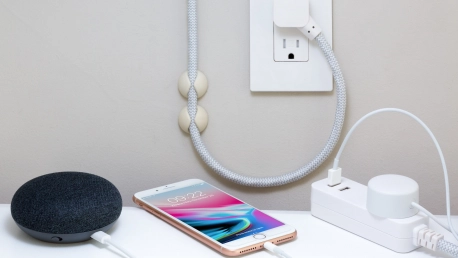In recent years, the demand for new Internet-of-Things (IoT) devices, apps, and technologies was driven by connected healthcare, smart offices, remote asset monitoring, and location services. At the beginning of 2021, the IoT adoption trend is expected to continue. Discover below five hot IoT trends to watch in 2021.
IoT Adoption Accelerated in 2020
A recent IEEE global survey shows that despite the COVID-19 pandemic, IoT adoption accelerated in 2020.
“Manufacturing (19%), healthcare (18%), financial services (15%), and education (13%) are the industries that most believe will be impacted by technology in 2021, according to CIOs and CTOS surveyed. At the same time, more than half (52%) of CIOs and CTOs see their biggest challenge in 2021 as dealing with aspects of COVID-19 recovery in relation to business operations. These challenges include a permanent hybrid remote and office work structure (22%), office and facilities reopenings and return (17%), and managing permanent remote working (13%). However, 11% said the agility to stop and start IT initiatives as this unpredictable environment continues will be their biggest challenge. Another 11% cited online security threats, including those related to remote workers, as the biggest challenge they see in 2021.
“The adoption of IoT (42%), augmented and virtual reality (35%) and video conferencing (35%) technologies have also been accelerated due to the global pandemic”, the survey shows.
Five main IoT predictions for 2021
- Enhanced Medicine via IoT
The COVID-19 pandemic and its impact on the healthcare system brought important changes to the diagnostic process. The use of IoT devices in healthcare opened up a world of possibilities, a trend that’s set to continue next year. The wearable segment is expected to grow exponentially, as vendors roll out medical monitoring features like glucose monitoring, heart rate variability, pulse oximeters, and electrocardiography. Proactive engagement using wearables and sensors to detect the patients’ state of health remotely will surge in 2021.
- Smarter Cities
Smart cities will continue to evolve, and the implementation of IoT technology will accelerate in 2021. The need for social distancing and health screenings, as well as the proliferation of 5G, will boost the adoption of IoT personal health devices. One of the trends to expect involves giving people faster payment methods for public transportation and further development of smart parking systems.
- Digital Twin Adoption and More Remote Offices
The shift to remote work accelerated the adoption of Digital Twin technology beyond manufacturing and into the merging worlds of the Internet of Things, artificial intelligence, and data analytics. Even when things go back to normal, fewer people will return to physical workplaces. Today, Digital Twin applications are found in sectors like manufacturing, automotive, and healthcare, but experts estimate that in the coming years virtual replicas of physical devices will be key strategic accelerators for digital transformation in many fields.
Furthermore, expensive corporate offices will become obsolete. According to Forrester, at least 80% of firms intend to develop comprehensive strategies for future offices, which include IoT applications to enhance employee safety and improve resource efficiency.
- One Step Forward for EV and Autonomous Vehicles
As vehicles continued to become increasingly capable IoT appliances, companies have substantially changed the way they manage their fleets. Despite the overall drop in 2020 sales, electric vehicles will continue to gain market share.
Smart connected vehicles are expected to evolve in 2021 and the global EV market share is expected to grow.
Companies will not be the only ones benefiting from IoT automotive perks. For example, the 2021 Mercedes-Benz S-Class gets Samsung SmartThings IoT integration, meaning that drivers will be able to control connected devices in their homes using natural speech.
- Increased Demand for Private 5G Networks
5G private networks are isolated, either physically or virtually, from public networks, using different hardware, virtual machines, or network slicing. Industry 4.0 players will invest in private 5G networks, as the gain in productivity is hard to ignore.
“The commercialization of the first 3GPP standard for 5G NR, Release 15 – focused on enhanced mobile broadband (eMBB) for applications such as smartphones, fixed wireless, and PCs –is proceeding rapidly. With 2020’s 3GPP Release 16 comes enhanced support for 5G non-public networks (NPN), their defining characteristic being a network for private usage and not accessible to public users. As we continue to develop 5G technologies that are 3GPP Release 16 compliant, private 5G networks will proliferate into factories and enterprises for high-speed, connectivity to power all types of devices, including IoT devices”, said Rajat Prakash, Engineer, Principal/Mgr., Qualcomm Technologies, Inc.
As more and more organizations shift from exploratory IoT investments to actual implementations of applications, new opportunities are created. Whether it’s the car we drive, the machinery we operate at the workplace, or the medical device we use, IoT technology will undoubtedly continue to play a significant role in our society.









